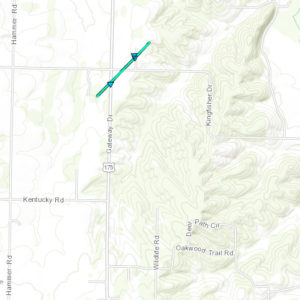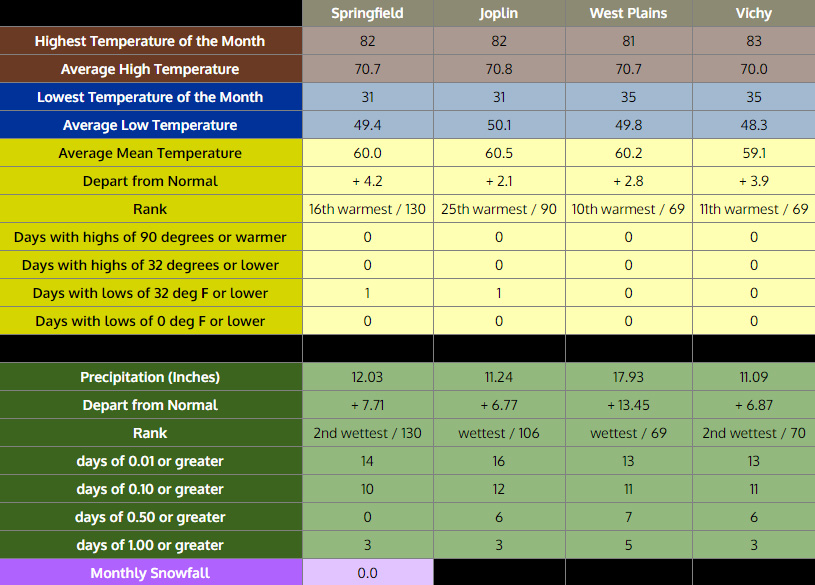 As we prepare to celebrate a very special and important anniversary this coming Tuesday, there’s a first anniversary that takes place today: Saturday, July 1, 2017. One year ago today this website was launched! Thanks to the content contributions of many hams in the community, visitor traffic to n0nws.com has quadrupled over the past year. Please keep it coming! Let us know how this website can continue to grow and improve, and we will do our best to make it happen.
As we prepare to celebrate a very special and important anniversary this coming Tuesday, there’s a first anniversary that takes place today: Saturday, July 1, 2017. One year ago today this website was launched! Thanks to the content contributions of many hams in the community, visitor traffic to n0nws.com has quadrupled over the past year. Please keep it coming! Let us know how this website can continue to grow and improve, and we will do our best to make it happen.
For those of you who regularly check into our Skywarn Training Nets on Tuesday evenings as well as helping to encourage youth and family members during the Sunday evening Youth/Family Net: Thank you!
Our linked repeater system has grown significantly in the past year as well. We now have double the amount of repeaters in service. Because of our owned-and-operated and our affiliated repeaters, the Southwest Missouri Regional Skywarn Repeater Network now covers more territory than any other linked repeater system in Missouri with coverage spanning into three neighboring states. Our coverage now extends south past the Arkansas border and northward to the Missouri River! With the upcoming linking of the 146.745 repeater in Macomb, our eastward coverage increase along the Highway 60 corridor will be considerable. Heading west, thanks to the Joplin repeater at 145.350 Mhz, our coverage extends well into northeast Oklahoma and southeast Kansas.
Operating and maintaining these repeaters costs a fortune. We owe a huge thank you to everyone who donated during the past year including:
KE0HRS – Laurie in Springfield, MO
N0UAM – Jim in Springfield, MO
N0OCP – Joye in Bolivar, MO
KD0ISH – Richard in Stockton, MO
NA0OO – Marvin in Joplin, MO
KE0FGZ – Brad in Goodson, MO
KC5NWD – Kent in Grove, OK
N0KDN – Mark in Willard, MO
KD0ZRF – Janet in Springfield, MO
W0JOE – Joe in Rogersville, MO
Because of your generosity, the Buffalo Repeater at 147.180 MHz. will benefit significantly. Thank you!
And, of course, most importantly, to our Skywarn spotters along with our faithful and hard-working net control operator: Jim, N0UAM, and the guys and gals at the National Weather Service Forecast Office in Springfied, Missouri – thank you for keeping the information flowing during severe weather. The spring severe weather season is over for 2017, and because of you, we have been able to continue our mission of protecting lives and property throughout the Springfield, Missouri County Warning Area: Thank you!
To Mike, N0NQW, all of the affiliated repeater trustees, and the other technical geeks who keep the “magic smoke” from leaking: Thank You!
Happy Independence Day! Have a safe and blessed summer!

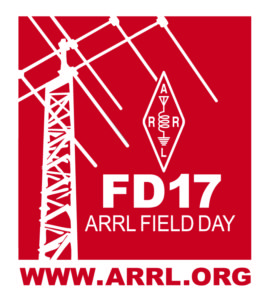
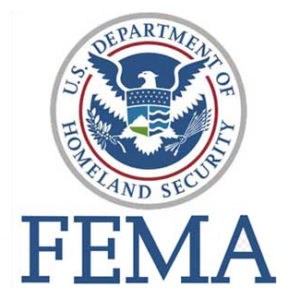
 In a flashback to last September, another series of earthquakes were felt throughout parts of the Springfield, Missouri County Warning Area last weekend. While these quakes centered between Harrison, Arkansas and Bull Shoals Lake were significantly weaker than
In a flashback to last September, another series of earthquakes were felt throughout parts of the Springfield, Missouri County Warning Area last weekend. While these quakes centered between Harrison, Arkansas and Bull Shoals Lake were significantly weaker than 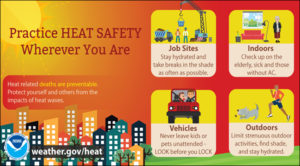
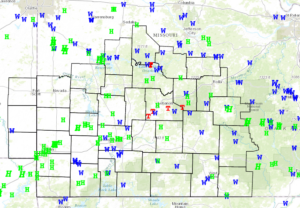 The National Weather Service in Springfield, Missouri confirms that five tornadoes touched down within our County Warning Area during the afternoon hours of Saturday, May 27, 2017 disrupting Skywarn coverage in the process. All five tornadoes were rated at EF-1 and had estimated winds of 90 miles per hour. They occurred within a one-hour span starting at 2:38 p.m. Central Time near Lake of the Ozarks with the final confirmed tornado hitting at 3:25 p.m. near Fort Leonard Wood. No injuries were reported with these tornadoes. Of direct interest to Skywarn: the tornadoes near Lake of the Ozarks knocked out power to our affiliate repeater in Laurie, Missouri on 146.955 MHz. This outage lasted for around 2 days and also disrupted service to three major cellular telephone companies as well as broadcast radio station
The National Weather Service in Springfield, Missouri confirms that five tornadoes touched down within our County Warning Area during the afternoon hours of Saturday, May 27, 2017 disrupting Skywarn coverage in the process. All five tornadoes were rated at EF-1 and had estimated winds of 90 miles per hour. They occurred within a one-hour span starting at 2:38 p.m. Central Time near Lake of the Ozarks with the final confirmed tornado hitting at 3:25 p.m. near Fort Leonard Wood. No injuries were reported with these tornadoes. Of direct interest to Skywarn: the tornadoes near Lake of the Ozarks knocked out power to our affiliate repeater in Laurie, Missouri on 146.955 MHz. This outage lasted for around 2 days and also disrupted service to three major cellular telephone companies as well as broadcast radio station 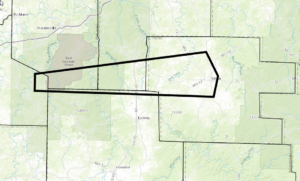 ng most of this event’s path. The hardest hit areas with more concentrated damage, including structural damage, were the communities of Edger Springs, Salem, and along portions of Highway 17. Both communities experienced minor to major damage to homes, businesses, and outbuildings. In one instance, the metal roof and main structure of a church gym in Salem was crushed downward which indicated a downburst wind up to nearly 100 m.p.h. Reports of vehicle, roof, and window damage were numerous across these communities. Some rural communities such as north of Evening Shade, Palace, Big Piney, and along Highway H sustained some structural damage with numerous trees falling on vehicles and roofs. Several outbuildings were severely damaged or destroyed. Some additional highways like Highway 63, Highway C, Highway DD, Highway 72, Highway 68, Highway 19, and Highway 32 were impacted by these intense straight line winds. Servey crews say that based on the damage from this event, wind speeds of 80 to 95 miles per hour were common along with several areas of downburst winds that possibly reached up to 100 m.p.h.
ng most of this event’s path. The hardest hit areas with more concentrated damage, including structural damage, were the communities of Edger Springs, Salem, and along portions of Highway 17. Both communities experienced minor to major damage to homes, businesses, and outbuildings. In one instance, the metal roof and main structure of a church gym in Salem was crushed downward which indicated a downburst wind up to nearly 100 m.p.h. Reports of vehicle, roof, and window damage were numerous across these communities. Some rural communities such as north of Evening Shade, Palace, Big Piney, and along Highway H sustained some structural damage with numerous trees falling on vehicles and roofs. Several outbuildings were severely damaged or destroyed. Some additional highways like Highway 63, Highway C, Highway DD, Highway 72, Highway 68, Highway 19, and Highway 32 were impacted by these intense straight line winds. Servey crews say that based on the damage from this event, wind speeds of 80 to 95 miles per hour were common along with several areas of downburst winds that possibly reached up to 100 m.p.h.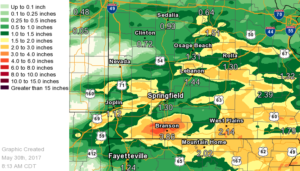 As the storms congealed into a west-to-east oriented line, torrential rainfall resulted in deadly flash flooding. Forecasters say the heaviest rainfall occurred in the Branson, Missouri area where 3 to 6 inches of rain fell in about a three hour stretch. This resulted in significant flash flooding of local creeks including Fall Creek, Cooper Creek, and Roark Creek. Multiple businesses and the Branson Campground were flooded as these creeks rose out of their banks. Several water rescues were conducted near these creeks as water rose quickly. Fall Creek reportedly rose as much as 14 feet in just 15 minutes! Sadly three people in Branson, Missouri died after their vehicle was swept away at a low water crossing along Fall Creek Road.
As the storms congealed into a west-to-east oriented line, torrential rainfall resulted in deadly flash flooding. Forecasters say the heaviest rainfall occurred in the Branson, Missouri area where 3 to 6 inches of rain fell in about a three hour stretch. This resulted in significant flash flooding of local creeks including Fall Creek, Cooper Creek, and Roark Creek. Multiple businesses and the Branson Campground were flooded as these creeks rose out of their banks. Several water rescues were conducted near these creeks as water rose quickly. Fall Creek reportedly rose as much as 14 feet in just 15 minutes! Sadly three people in Branson, Missouri died after their vehicle was swept away at a low water crossing along Fall Creek Road.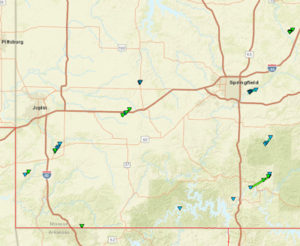 If you have ever lived in a part of the world where the weather is mundane day in and day out, it might be hard to imagine how quickly things can change here in Southwest Missouri. Take Southern California for example where the television weather folks are often out-of-work comedians and actors desperate for a gig. They can seemingly record a TV weather segment and replay it over and over for weeks at a time with total accuracy.
If you have ever lived in a part of the world where the weather is mundane day in and day out, it might be hard to imagine how quickly things can change here in Southwest Missouri. Take Southern California for example where the television weather folks are often out-of-work comedians and actors desperate for a gig. They can seemingly record a TV weather segment and replay it over and over for weeks at a time with total accuracy.